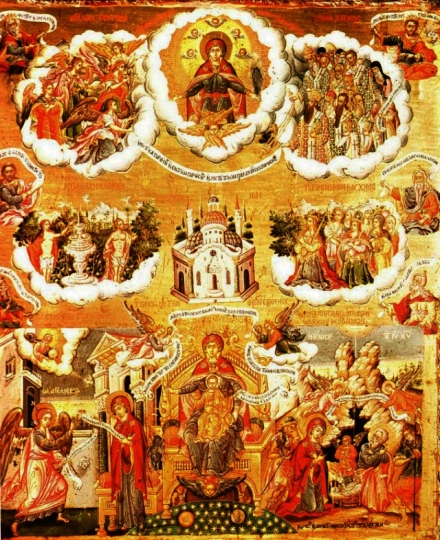
In the name of the Father and the Son and the Holy Spirit!
Dear brothers and sisters!
On the Solemnity of Orthodoxy, we celebrate a church event: the end of the era of the seven Ecumenical Councils. At the Seventh Ecumenical Council, the dogma on icons was proclaimed, which tells us that, becoming a man, God became imaged, that by His incarnation, the invisible, incomprehensible Lord acquired a human image, and that the image of God can be reflected by lines and colors; not as a portrait, but as an inner, mysterious image of God, known, experienced, known in the Church.
How strange it is: God has an image, and we can contemplate this image; and in front of the icon, which expresses church experience, church knowledge about God, we can really bow our knees with love, with reverence, with tenderness. God became one of us, without ceasing to be the incomprehensible, the great God, the very Life, the very Holiness, the most incomprehensible. And together with this, the word of the Old Testament about the fact that we are created in the image of God is illuminated in a new way; each of us is an icon. How strange it is! Looking at each other, just as when we look at an icon, we can see the image of God with the gaze of faith, with the gaze of love, with the gaze of reverence.
There is a word in the New Testament that we should render to Caesar what is Caesar’s and to God what is God’s. This word was said when the Savior Christ was presented with a denarius with the imprinted face, the image of the Roman Caesar, and He answered: give that which has the seal of the world, the seal of power, the seal of the earth, to those to whom it is dear; and give to God what is reflected by His seal … And each of us is the image of God, on each of us is this seal that makes us God’s, and we cannot give this to anyone – only to God.
And today’s feast of icons tells us not only about handwritten icons, not only about the fact that God is imageable, that God became a man and has a human likeness and image; but also tells how we should treat the fact that each of us is a holy icon of God. How should we treat ourselves and each other, if only we understand it, if only we can remember it! There are icons desecrated, despised, disfigured by human malice; and these icons become so dear to us, as if they were icons-martyrs; we want to preserve these icons, surround them with love, protect them, because they have suffered so much from human untruth… This is how we should look at each other when a person has been disfigured by sin, when a person is wounded, when it is so difficult to see the beauty and glory of God in him ; then we need to look deeply into this holy and profaned image, then we need to put in all the work,
And so, today we will enter the second week of Great Lent, at the end of which Saint Gregory Palamas will proclaim the glory of man, will say that God’s grace, which lives in man, rests in him, touches him, heals him, making him new, that this grace – God Himself, who dwelled in us. How reverently we should look at each other, how reverently and reverently we should treat each other, despite our infirmities, weaknesses, sins, because we are an image: blasphemed, yet sanctified. Amen.
(37)
